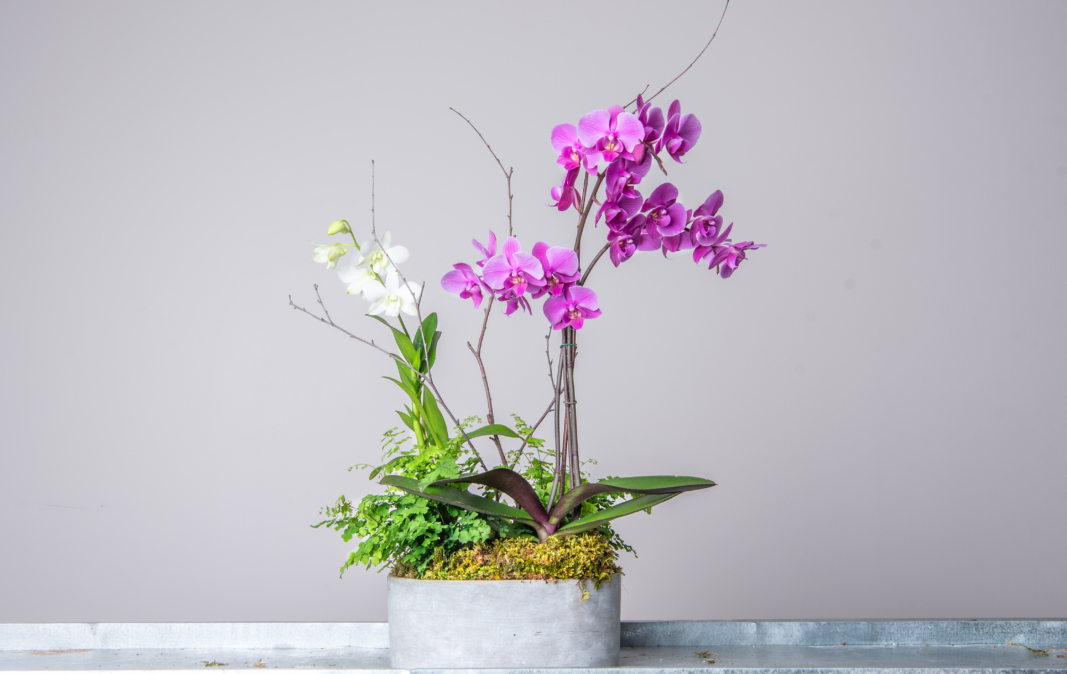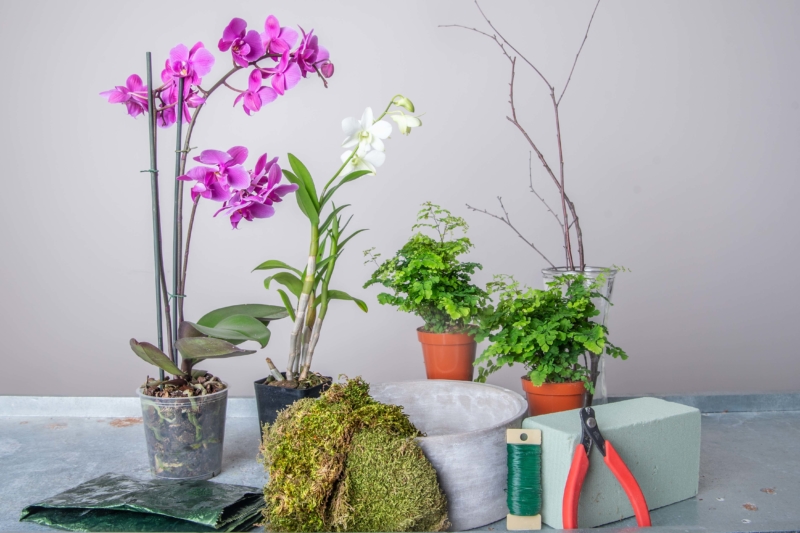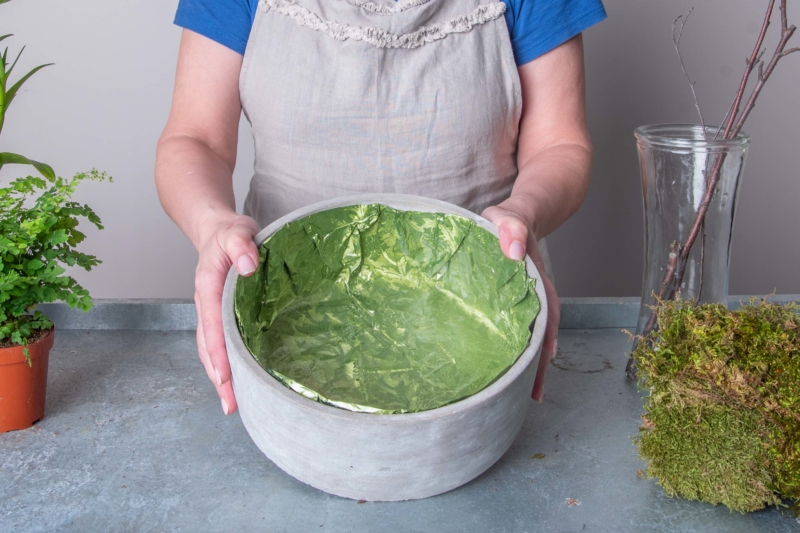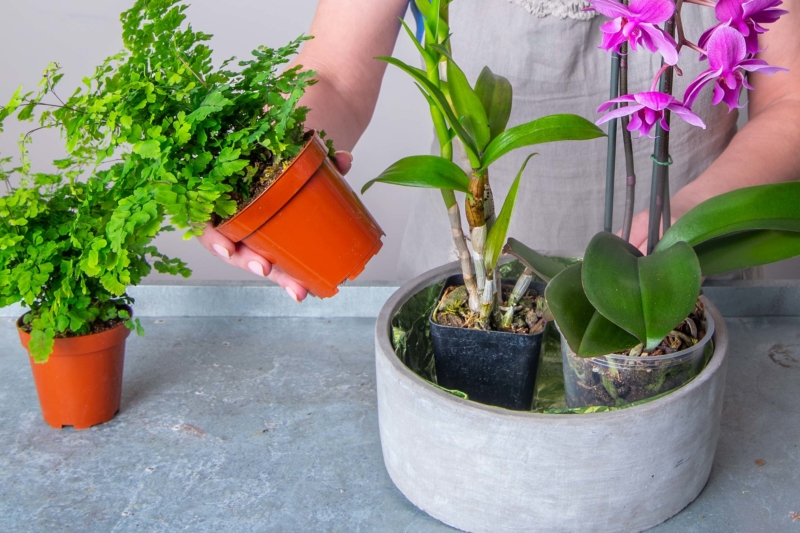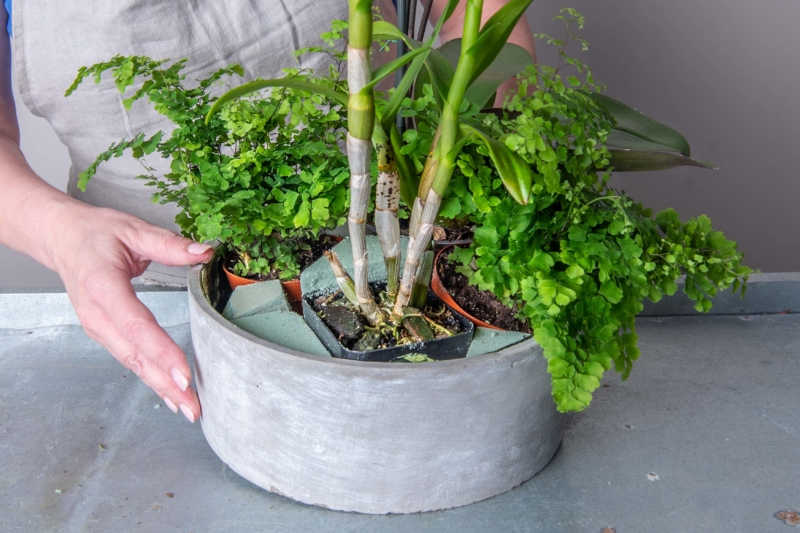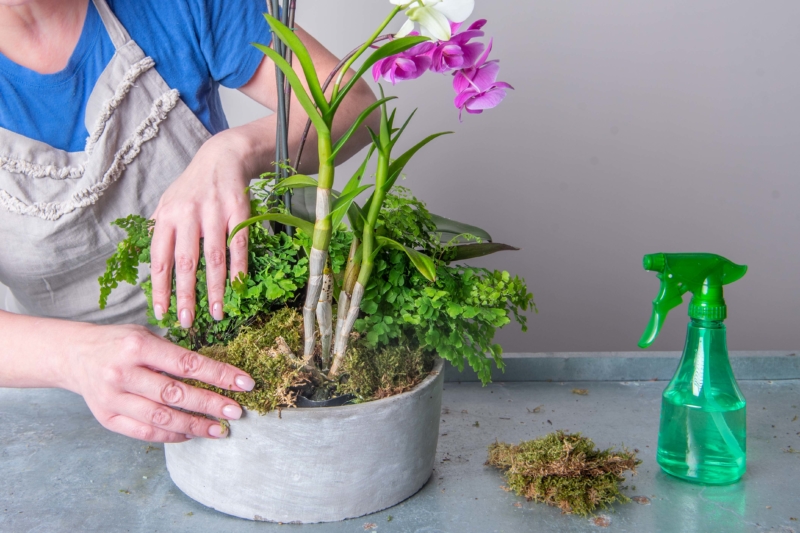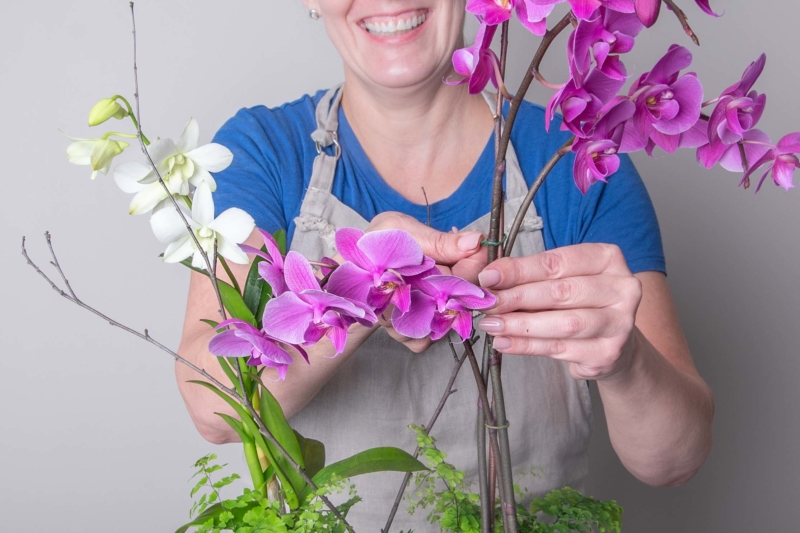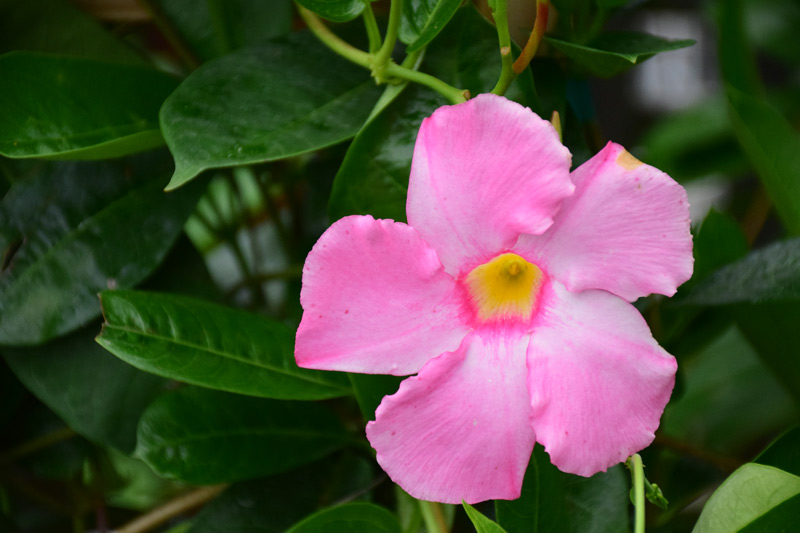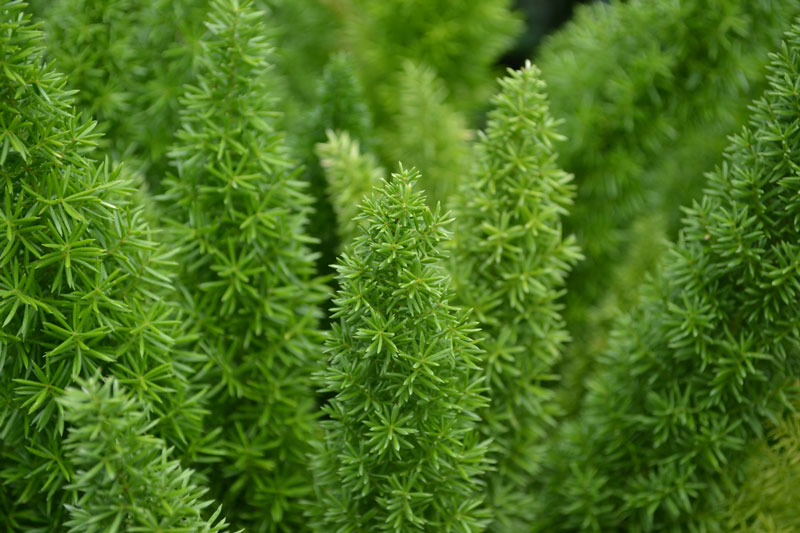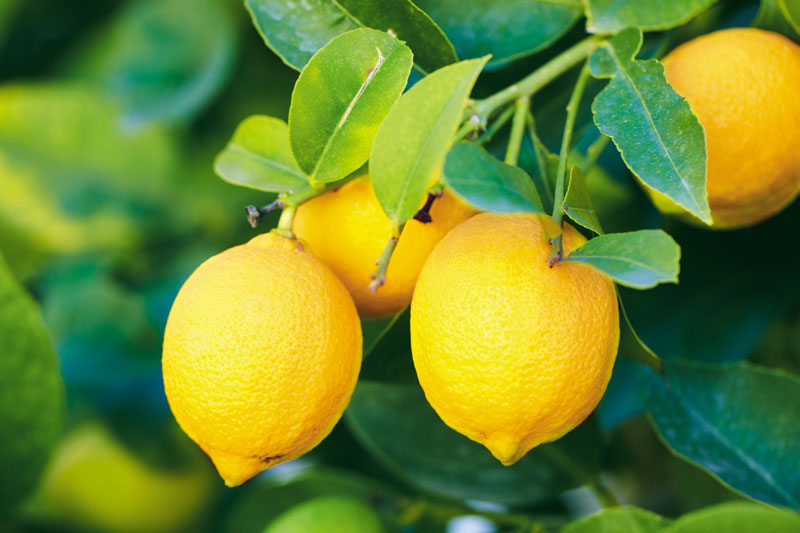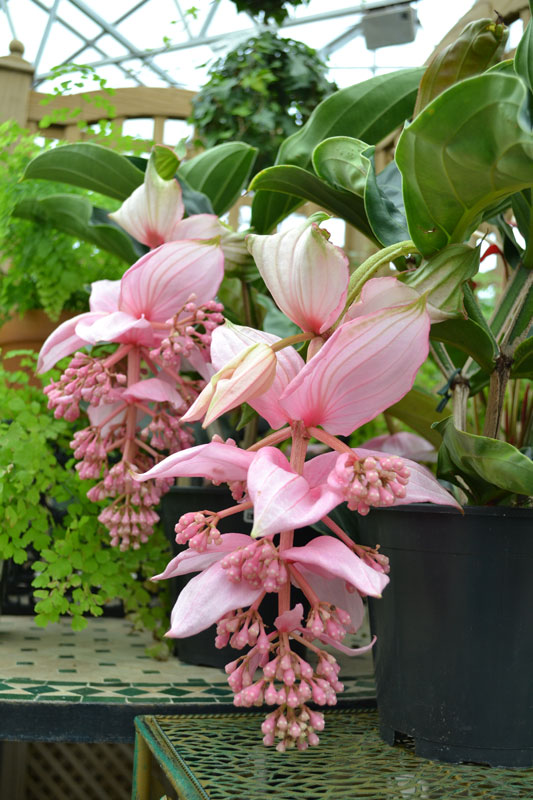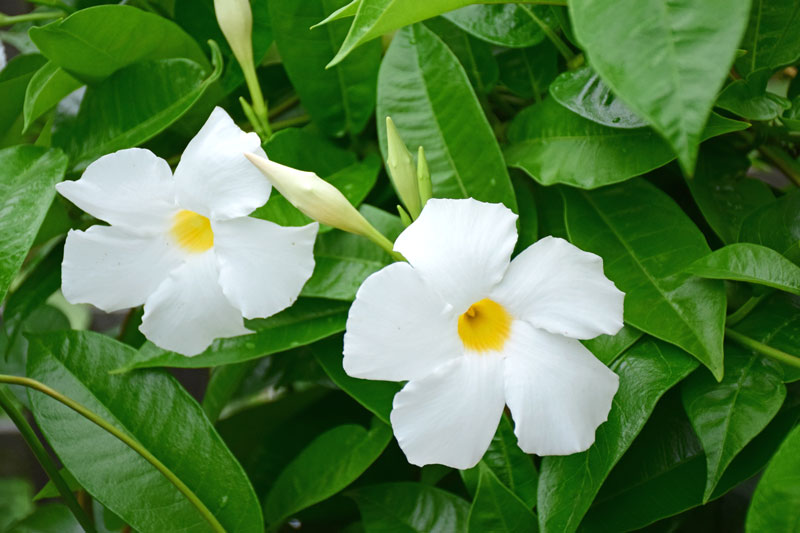DIY Potted Orchid Garden
As elegant greenhouse plants, orchids and ferns thrive year-round, and make the perfect plants for garden fresh arrangements. Elegant and timeless, they can be used for any occasion, or just to bring a fresh update to your home at any time of the year. These arrangements are simple to make in just a few steps, and with a little care and attention, anyone can keep an orchid and fern garden for years to come.
To create this arrangement, here is what you will need:
Supply List
For a centerpiece arrangement
- Decorative vessel – approximately 10 inches in diameter
- 1 or 2 orchids in 4 inch pots
- Two assorted ferns in 4” pots (we used maidenhair ferns)
For a grand entryway arrangement
- Decorative vessel – approximately 20 inches in diameter
- 2 orchids in 4 inch pots
- 1 orchid in a 6 inch pot
- 3 ferns in 4 inch pots
For both centerpiece and grand entryway arrangements
- Moss to cover your orchid and fern grow pots (we used preserved sheet moss)
- Branches (we used white birch)
- Raffia or wire to tie the orchid to the support branches
- Floral foil or heavy-duty aluminum foil
- One block of sahara foam and a knife to cut it
- Pruners
- Spray bottle or small watering can
Step One: Prepare Your Vessel
Select a vessel that is about five inches deep to cover the orchid and fern grow pots. You can select any container meeting that requirement that suits your taste, and matches the decor of the location where it will be placed. After selecting a vessel, line the interior with floral foil or heavy-duty aluminum foil to protect the container.
Step Two: Arrange your Orchids and Ferns
Place the orchids slightly off-center, leaving them in their grow pots, to give your arrangement a more natural look. Afterwards, place the ferns in their grow pots around the orchids, angling them away from the orchids to fill the space around the perimeter and hide the orchid pots. Leaving the orchids and ferns in their respective pots allows each to be watered according to their individual requirements.
Step Three: Cut and Place Sahara as Needed
If the container is deeper than the height of the potted orchids and ferns, place sahara under the pots to raise them to the desired height. After this is done, fill in any voids between the individual pots with sahara to stabilize the arrangement, and hold it firmly in place.
Step Four: Prepare and place the moss
Lightly spray the moss with water, and arrange it in the display. Dampening the moss makes it easier to manipulate and arrange, and also prevents it from making a mess. The moss serves as a beautiful way to cover the ‘mechanics’ of the garden, including grow pots, sahara and empty space between the orchids and ferns.
Step Five: Add Branches for Support
Not only do branches add drama to garden arrangements, they also help support the heavy orchid blooms. Place your branches in the orchid pots and tie them to the stems of your orchids using rafia or wire.
Caring for Your Potted Orchid Garden
For best results, keep your potted orchid garden in bright, indirect light.
Water each type of plant in your orchid garden according to the individual care instructions for that plant. The ferns, for example, will prefer a thorough watering a few times a week, depending on the time of year. Orchids generally prefer a thorough watering about every two weeks.
For additional information, check out some of our previous blog posts such as orchid care for beginners and the basics of caring for houseplants.
If you make your own Potted Orchid Garden using these instructions, we would love to see it! Please share on Instagram and tag @merrifieldgardencenter for a chance to be featured on our page


